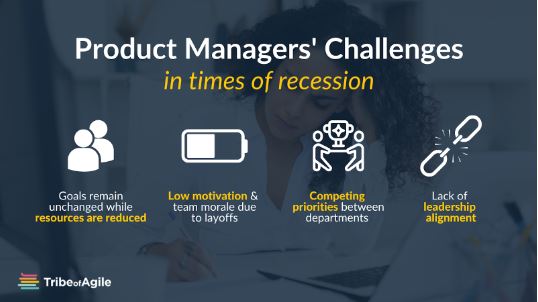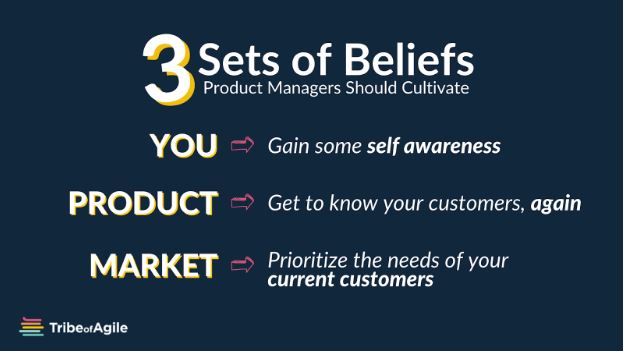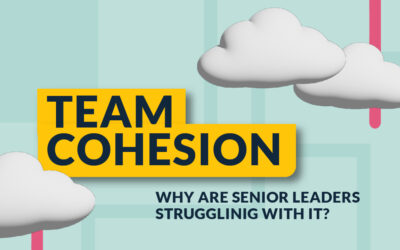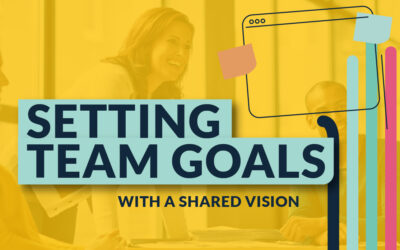As we look to 2023, it seems like product managers are being asked to transform into mythological creatures with the powers of demigods. They’re tasked with seemingly insurmountable challenges: to grow their user base, add new and exciting product features, keep up with changes in user behaviors, ward against disruptors and increase profitability. All while pushing against the headwinds of a looming economic recession…

If this sounds relatable, read on. I hope to empower you with the mindset you need to forge forward in your quest.
I’ve been asking our clients and prospects this question: How have you, personally, been dealing with uncertainty? These are among their responses:
- “How do I convince my team to stay motivated and productive when my parent company is laying people off?”
- “Goals remain unchanged while people and capacity have been significantly reduced”
- “Different departments start having “their own agendas” to meet their goals, thus creating competing priorities between sales, product, etc.,”
- “Leadership is not aligned with us, the product team, on where to cut costs, what features are truly essential, etc.”

Many of us are left wondering, is this a recession? A recession can be defined as a sustained period of weak or negative growth in real GDP that’s also accompanied by rising unemployment rates.
There’s a lot of debate about whether or not we’re currently experiencing a recession. Whether we are or aren’t—and whether or not there’s economic turmoil on the horizon—times are tough for many businesses. Navigating uncertainty isn’t easy.
So now, to what we came for. What do we do about it?
Just this week, I sat in on a mindset call with my strategy coach, Ahmad, who helped me break this down. I’ll share with you what I learned because it applies perfectly here.
He began by asking, what I thought at the time, was an irrelevant question to the topic we came to discuss:
“What is your belief?”
“Your belief frames the way that you see the world,” he told me. “Your beliefs are the glasses through which you perceive how everything happens around you. They are how you assign meaning to your reality, how you interpret what happens and what doesn’t happen. And, in a very tangible way, they have a direct impact on the material results that you experience.” – Ahmad Munawar
Beliefs can come from all external sources that seek to influence you—including your friends, family, colleagues, the media, etc. Your beliefs become a filter through which you understand your reflected experience. When things happen that align with your beliefs, you get confirmation bias. You validate those beliefs.
You have all of these inputs, these sources of “truths” that are informing your belief.
Where does your agenda fit into all of this?
In the absence of a deliberately constructed set of beliefs that are going to serve you in the months to come, you are a kite, and, whichever way the wind blows, you are going to flap in the wind with neither an anchor nor stability.
What’s going to ground you and help you navigate potentially economically turbulent times is the beliefs that you decide are going to serve you.
These are three sets of beliefs you should cultivate:
- Beliefs about you
- Beliefs about your product
- Beliefs about the market
All three are necessary because you are the player in the market, you have a product that you bring to the market and the market pays you to use that product.

Beliefs about you as an expert.
Take a hard look at what you do and how you do it to arrive at a place of confidence.
Gain self-awareness.
Here are some tips to help:
- Question all of the decisions that you’ve recently made that may need to be reconsidered. Maybe you took them for granted before.
- Recall any and all disruptions that you might have faced in the past and how you responded to those disruptions.
- Reference your history of capitalizing on these learning opportunities—Covid being the most recent one!
Rely on your track record of overcoming challenges, overcoming hardships and recovering from disruptions. This is no different. Construct a belief about yourself that works for you.
Beliefs about your product and customer/user
You have to believe that what you bring to the customer is what your customer needs now.
Get to know your customers, again.
If you haven’t already, get to know your customers and who they are now. When shutdowns began in March of 2020, people spent months inside and learned to bake bread to pass the time. These were not the same customers you had in February of 2020.
With all the earth-shaking events of the past two years, their values have changed. Two years later and a looming recession, who are they now? Do they align with your organization’s vision?
As a product manager, you own the insights into your users. You understand their behaviors better than most. So ask yourself the following questions:
- What are your customers’ priorities right now?
- Should you adjust your product?
- According to your research and analysis, what has changed?
- Are different people using your product?
- Are existing customers using it in new ways?
- How does your product benefit your customers’ altered lifestyles?
- Which customers came to your product because their circumstances and values have changed?
Answers to these questions can identify opportunities to grow your product’s market share.
Prioritize the needs of your current customers.
It is well known that successfully selling products to an existing customer is much less expensive in terms of marketing spend than selling products to a new customer. That’s why, during economic hardship, companies need to capitalize on their existing customer base.
A study, published in the International Journal of Business and Social Science, puts it this way: “It is not easy to get new customers when the economic climate is normal, not to talk of periods of economic downturn.”
- Ask current customers what they need from you.
- Leverage your sales teams- they have a true pulse for what’s happening and they also have ideas!
- Care for your current customers, and they will likely stick to you if the going gets tough.
Beliefs about the market
Let’s plug into the market and leverage the data.
Focus on innovation.
That sounds counter intuitive, doesn’t it? And you may be right. Innovation is often something that companies will place on the backburner during times of economic hardship.
According to research published by McKinsey & Company, though, innovation is something that companies should prioritize rather than relegate during an economic downturn. The report states: “Many businesses simply cannot operate as they have in the past. What made a company successful historically may no longer be possible during or after the crisis… A stable regulatory context may have changed, potentially creating opportunities that never existed before.”
Challenge you and your team to ideate on what those opportunities are. Don’t forget the sales team!
The times they are a changin’…
Product managers are changing, too. How? You have the ability to pivot, the ability to adjust and adapt, and the opportunity to re-evaluate your product.
Coming out the other end of a pandemic, you understand that there has been a paradigm shift in how products were thought of and how they were created.
It is this culture change that I want to draw your attention to. I don’t intend to downplay anything. A recession does feel like a bad thing. It can challenge your very identity.
So where’s the silver lining…?
It’s the right opportunity to check in and evaluate our beliefs around a recession and what they mean for us, our organizations, our products and, most importantly, our users.
In fact, the learnings from this experience—the stories and anecdotes that you generate—are going to serve you for years to come. In the future, you will talk about how you navigated this recession and how you became a better product manager for it, as well as what you learned as a result. As Ahmad posed it:
“It’s a learning opportunity being served on a silver platter.”
How do I know what the future holds, you ask?
It’s what we’re seeing more often with our client partner. Software enterprises are placing value on cross-functional, interactive ways to help redefine their vision, revisit and define strategic themes and metrics and align on their imperatives.
But don’t just take my word for it. Remember from not too long ago (just two years ago)? You overcame challenges, you overcame trials, you overcame uncertainty—and this is no different. You’ll do it again.
Not sure where to start? ToA is here to help you navigate these times and get stuff done. Reach out to me at karla@tribeofagile.com or connect with me on LinkedIn to learn more.



